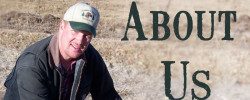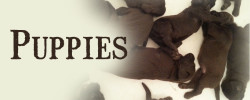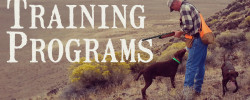If you’re a first time dog owner, here are 15 things to avoid, from Scott Haugen, who owns two of our pudelpointers.
Transcript:
With the pandemic has come a huge increase in hunters getting dogs, which is great! Making my living in the outdoors, I’m around a lot of different dogs and especially pups over the past two seasons. I’m Scott Haugen. And if you’re a first time owner of a hunting dog, here are 15 tips you’ll want to avoid.
Number 1: Avoid playing tug of war.
Puppies play tug of war to establish dominance within the litter, and they’ll want to do the same with you. Don’t do it, ever. The last thing you want is a mature dog trying to prove who’s boss. It may seem fine at home, but in the field, it can be a catastrophe. You’re the boss and always will be, so avoid even putting yourself in a position to have to compromise your leadership role.
Rope toys are good for the teeth and gums, as are bones and they release endorphins while chewing, so just let the pup play with it on its own.
Number 2: Don’t use bumpers as toys.
Bumpers are used for training. Toys, they’re used for play. Don’t mix th em up as this sends mixed messages to your dog. As your pup matures, it’ll distinguish the difference between the two to achieve this.
Only used toys during play and only do formal training with bumpers. You’ll see the difference in your dog’s demeanor the moment you grab one or the other.
Number 3: don’t encourage fast eating.
One of the worst things you can do is encourage your dog to eat fast. It may seem funny, but it could lead to bloat, indigestion, and stomach twist, which is highly fatal in some deep chested hunting dogs.
If your dog eats fast, use special bowls or add water to the dry kibble to slow down its intake.
Number 4: Don’t let your dog run out the door ahead of you.
Never let your dog burst out the door in front of you. From other people to other dogs, snakes, skunks, or worse, oncoming cars, there’s no telling what they might encounter on the other side.
Keep control of your dog at all times, letting them through house and car doors only when you give the command.
Number 5: Never call a dog to you, then scold it.
Dogs remember the last command given, so never call them over with the intent to scold them for something they’ve previously done wrong. They did the right thing by coming to you.
Scolding them for that action can do long term damage and quickly make them lose trust in you.
Number 6: No teasing.
Never tease a hunting dog as this will send them mixed messages resulting in their loss of trust in you and it’ll greatly frustrate them. Gun dogs are highly intelligent and our communications must be consistent and predictable at all times.
Playing is different than teasing. Playing is great, teasing is not.
Number 7: Don’t neglect playtime.
Dogs love to play. You should spend more time playing with your dog than training it. This is when strong bonds are formed. Communication lines develop, and when they learn to trust, appreciate, even respect you, a great deal of training is actually achieved through playing.
Just keep communications consistent and fun.
Number 8: Avoid long sentences.
Gun dogs are smart, but not that smart. Speaking to them in lengthy sentences only confuses them. Keep communication to single words or two or three word sentences in order to avoid confusing and frustrating your dog and you.
Number 9: Avoid confinement.
Gun dogs need space. If you live in an apartment with no big yard for them to run in, this is not the place to have a hunting dog. Gun dogs aren’t designed to be confined to small kennels every day either. The more room they have to run, the more relaxed, happier, and healthier they will be.
Number 10: When training, don’t wear sunglasses.
Dogs rely on reading your eyes. A great deal of training is built on body language and eye contact, not just verbal cues. Never cover your eyes when training or playing with your dog. Dog owners often say, dogs can read minds. But what they really mean is, dogs try to anticipate your next move and they largely have achieved this through eye contact.
Number 11: Don’t overreact to a situation.
Never overreact to a dog’s lack of performance or disobedience. Save those reactions for when they’re about to run in front of a car, attack a porcupine, or wrestle with a snake. Calm communication is often all that’s needed to get a positive response from your dog.
Number 12: Don’t issue multiple commands at once.
Never layer your commands. Give one command at a time and don’t issue another until the first is achieved. Don’t be the one who hollers, Whoa, back, sit. Come here. Get over there. No, back. Get over here. Fetch it. Come on, bring it here. Hurry up. The dog has no clue what you’re trying to convey.
First, woe it. Then send it back. Then make it sit. It’s simple. Be patient and clear in all communication.
Number 13: Don’t rely on treats when training your dog.
Dogs that perform for treats often disconnect from their owner. Such superficial bonds result in a lack of respect and drive by the dog. A dog should always want to carry out a task to please you, not for a treat.
Number 14: Don’t play on hardwood floors.
Never play with a dog on wood, tile, or linoleum floors. While it might seem funny to watch them spin their wheels, it’s a sure ticket to costly hip, back, leg, and foot problems.
Number 15: Don’t overfeed your dog.
The worst thing you can do for your dog is to allow it to overeat and gain weight.
For some breeds, one extra pound of weight can deplete the dog’s life by up to a year. Keep them lean, healthy, and feed the best quality food you can afford. Avoid cheap foods packed with filler and inflammatory ingredients. Poor quality food is one of the biggest obstacles for dog owners to overcome, so please do the research.
Of course, there’s a lot more, but I’m hoping that by avoiding these 15 tips, you’ll be well on your way to establishing a fun, trusting, genuine relationship with your dog.
Have fun out there!


